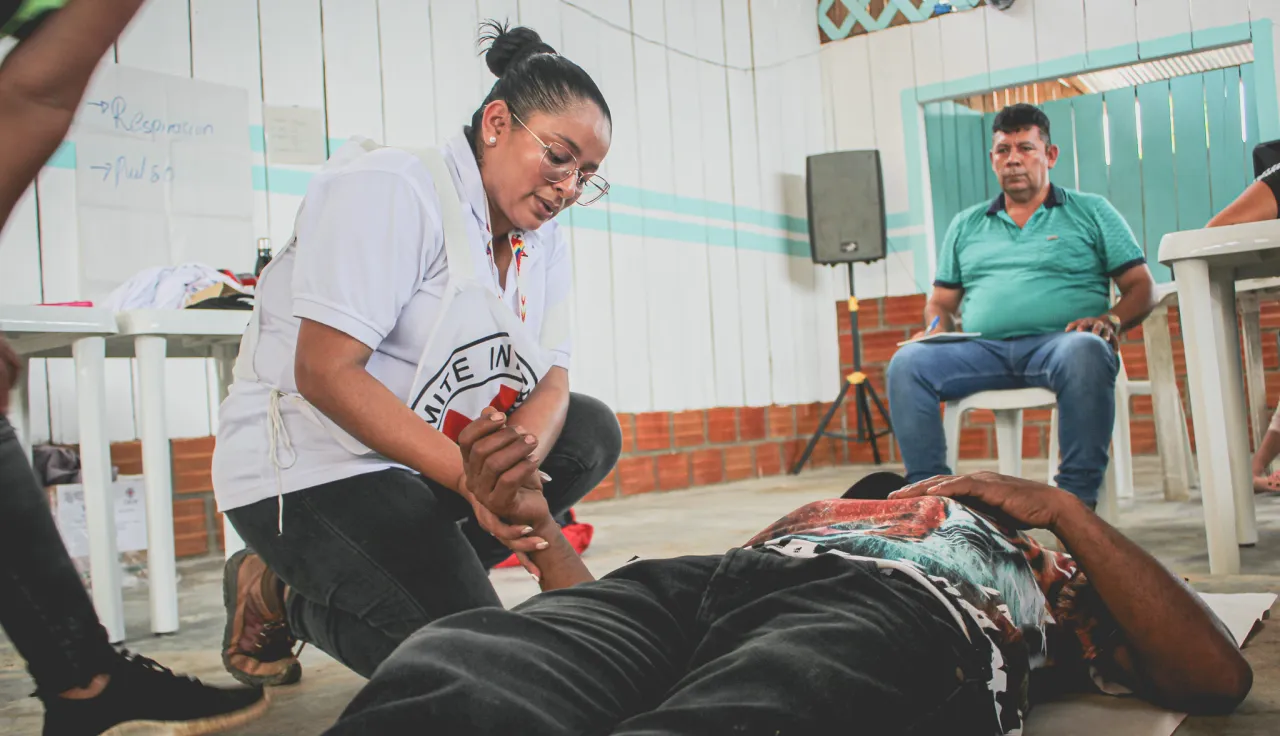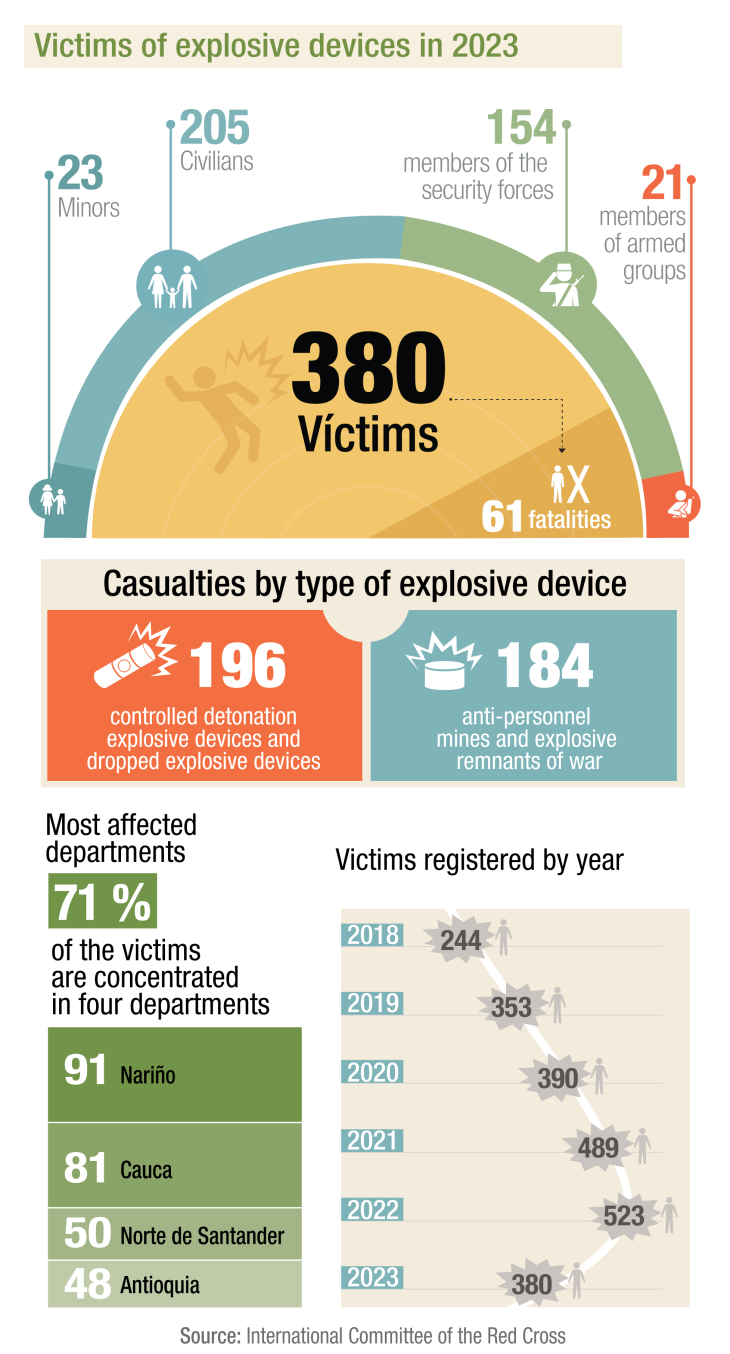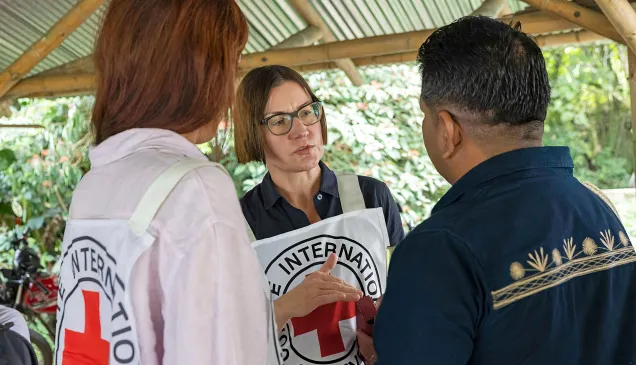The invisible consequences of explosive devices in Colombia

In Colombia, the presence, use and abandonment of explosive devices in both rural and urban areas continues to leave an indelible mark on society. The cumulative consequences of these devices are varied and devastating, as they pose a long-term threat to communities.
The presence or suspected presence of even a single device can confine an entire community for long periods or, at times, intermittently. This limits access to essential resources such as water sources, schooling and medical care.
There is also a risk of losing traditional practices rooted in the communities. They are forced to endure the fear and anxiety of having to travel further to avoid areas where anti-personnel mines may have been laid or where explosive remnants of war may be found. This situation is compounded by those who have made the difficult decision to leave their homes because of the constant danger posed by the presence of these devices. This exacerbates the problem of displacement in the country.
The mere suspicion that these explosive devices might be present has affected communities that depend on their local economies. Fishing, hunting and access to agricultural activities, especially in peasant, Afro-descendent and indigenous communities, has been disrupted. These cumulative consequences go beyond the immediate and visible damage and reflect the complexity of armed conflicts in Colombia.
We are concerned about [armed actors] arbitrarily restricting mobility to communities and limiting access to basic services such
as education and health.
During 2023, we recorded 380 direct victims from anti-personnel mines, explosive remnants of war, dropped ordnance and controlled detonation devices. Of those people, 61 died, and the others were injured. They faced barriers to health care, long periods of physical recovery, and economic, social and psychological conse- quences that radically changed their lives. There was a 27 % decrease in the total number of direct victims compared with 2022, which is related to the decrease in occurrences from controlled detonation explosive devices, from 240 in 2022 to 75 in 2023.
However, this decrease does not imply a reduction in the presence, use and abandonment of explosive devices, but rather a change in their use since, at the same time, there was a significant increase in the number of victims of self-activated devices. In this regard, it is worth mentioning that our teams in the field recorded 169 cases in 2022, while in 2023 there were 184: a 9 % increase in the number of victims of this type of incident.

The problem analysis also shows that there were new contaminated areas. This is reflected in the fact that 40 of the 73 municipalities in which explosive artifacts accidents were recorded in 2023 had no casualties the previous year.
Of the total number of registered victims, 54 % were civilians, 40.5 % were from the security forces and the other 5.5 % were from non-state armed actors. This shows that affected communities continue to face significant humanitarian challenges. It is therefore imperative that all armed groups stop using weapons that have indiscriminate effects on the civilian population.
Behind every statistic, there are family members who have suffered the irreparable loss of loved ones because of explosive devices. There are also those who survive and who, despite the adversities they face on a daily basis, find the strength to overcome the physical and emotional aftermath.
Read 'Humanitarian Report 2024'
- The human cost of armed conflicts in Colombia
- Wars have limits that must be respected: Lorenzo Caraffi
- The invisible consequences of explosive devices
- Lost in a maze: the footprints left behind
- Worrying increase in violence against health in Colombia
- Return to freedom: 44 years of neutral intermediation
- Rights do not end behind bars
- Communities tell their stories
- Calls to action



